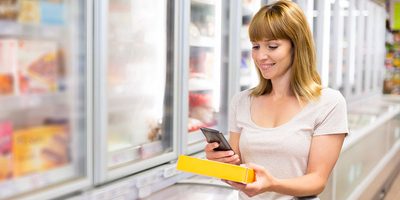
Discovery Vitality launches innovative nutrition app in South Africa
This morning a novel nutrition app known as HealthyFood Switch was launched in South Africa as a result of a partnership between the George Institute for Global Health and Discovery Vitality.
The mobile app, designed and launched in Australia in 2012, allows consumers to scan the barcode of a packaged food item and provide nutritional information on the energy, total fat, saturated fat, carbohydrate, sugar, fibre, sodium and calcium of the product. The algorithm that governs the app displays nutrient composition either by a star rating system (½ a star to five stars) or by traffic light labelling (red, amber or green). The user is also shown alternatives within the same food category, allowing them to make a switch to a healthier product before they head to the check-out counter.
Head of Vitality Wellness Dr Craig Nossel notes that “in the face of the obesity and noncommunicable diseases epidemic, urgent efforts are needed to empower people to make healthier nutrition choices and to translate the dietary information on the box into meaningful behaviour change.” He goes on to explain that “nutritional labelling information is often confusing to consumers, but FoodSwitch makes the whole thing easy because it allows people to interpret the information at a glance and make quick swaps while they’re shopping.”
The app was developed from an existing food database of approximately 17,000 packaged foods and shortly after its release in Australia, FoodSwitch made its way to consumers in New Zealand and the UK. Within a short 18 months of initial launch some 600,000+ users had downloaded the app onto their phones. Consumers have been encouraged to contribute to the growth of the database by taking pictures of the relevant information on food items and sending this on to the developers, leading to a rapid expansion of the database to over 75,000 products.
“We have had a remarkable response from users,” says Dr Elizabeth Dunford from the George Institute. Since it was developed, the FoodSwitch app has maintained a 4+ score in app stores and the vast majority of feedback from consumers has been positive. South Africa is the fourth country to have access to FoodSwitch, and plans are in place to release the app in over 30 countries, many of them low- to middle-income countries.
The information displayed to users can enhance understanding of nutritional information and the switches have the potential to lead to significantly improved diets. Food manufacturers will also need to pay attention to their protocols if they want to feature as products with high stars or green lights appear first.The data provided by this app will provide interesting data to support the setting of food policy, including South Africa’s recent aim to reduce the whopping quantities of salt in many food items. “Technology has the power to dramatically enhance health,” says Dunford, “but the app also has public health implications as it encourages the food industry to take responsibility and re-evaluate what’s in their products.”


